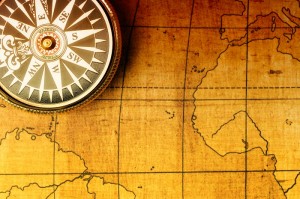
Innovation can certainly be an adventure. It requires the courage to face uncertainty, and a willingness to take risks. The outcome is never entirely clear. Yet we must be proactive in our pursuit of it. The path is unknown so we need to be imaginative in how we seek it out. We cannot be sure what will be required to achieve success, so we need to be resourceful and strategic. And because failure is always one possible outcome, we need to have faith in ourselves and our capabilities, and in the potential of our ideas. We need to be willing to explore and experiment. We need to be adventurous.
This is part of a series of posts on newly published research into personal innovativeness, its impact and its attributes. If you like, you can download a white paper on this body of work. In previous posts, I wrote about the importance of awareness, openness and being imaginative. This one focuses on how we make innovation happen.
Even the best ideas have little value until they are implemented, until someone takes action to make them real. That does not mean that an idea will necessarily be successful. If you know in advance that your idea will work, it is unlikely to be very innovative. So the challenge is to explore our ideas to find out which ones will work and how.
Of course we can have a bias for taking action in ways that are not innovative. We can bravely pursue our objectives based on what we are already convinced will work. That may seem more prudent, but it is unlikely to break any new ground. To be innovative, we need a bias for action that tests and explores new possibilities.
When we think conventionally, we tell ourselves that we should not waste time and resources trying things that may not work. We should rely on established knowledge and processes to meet or goals. So when we face uncertainty we tend to delay taking action. We become risk averse and overly cautious. As a result, we miss opportunities and leave promising ideas unexplored. This makes it more difficult to meet new challenges and adapt to the changes we all face over time. Instead of gaining the kind of competitive advantage innovation can provide, we risk becoming the target of someone else’s innovation.
This is the part of innovation that so many innovation processes attempt to address. They take a promising idea and begin product or service development and potential market identification. They refine the technology, build prototypes, develop a sales & marketing strategy, identify an appropriate business model, set up needed business processes and eventually launch that idea. On paper, it looks a lot like following a recipe, but it is fundamentally different. It is about creating a new recipe. That is not an execution problem; it is primarily a figuring-out problem—including figuring out how to best execute. At virtually every step in that process, what you may think will work is really a hypothesis to be tested. So it requires experimentation.
That is a very different mental model than baking a cake. Rather, it is figuring out how to create a new kind of cake, or maybe a new kind of desert, or a new kind of food, or even a new kind of nutrition. It is similar to the difference between being a musician and being a composer; between being an actor and being a playwright; between being a builder and being an architect. For each pair, the first skill is about getting things done; the second skill is about determining what should be done.
Adventurers are those who take the lead, who test their ideas (and themselves) and who explore new possibilities. They strive to not only succeed, but to learn. They are supremely confident in their abilities and supremely humble about what they know will work. They recognize that much of what they need to know, they will have to learn along the way. While they do not seek to fail, they recognize that having some failures is an inevitable part of innovation. So they think strategically, calibrating what level of risk is acceptable, what resources are needed, and prioritizing tasks based on the potential value created. They take action not because they are certain that their ideas will succeed, but because they understand that taking action is the only way to find out. It is a different mindset, one that is willing to take the necessary risks because of the potential new value they want to create.
That is the adventure.

Leave A Comment